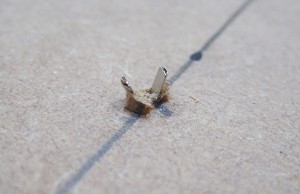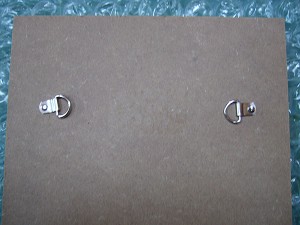 Sometimes you may find yourself using a moulding that is just way too narrow to attach a screw and D-Ring to. If you do, the rounded edge of the D-Ring can end up being visible from the front of the frame when hanging on the wall, which isn’t pleasant to look at.
Sometimes you may find yourself using a moulding that is just way too narrow to attach a screw and D-Ring to. If you do, the rounded edge of the D-Ring can end up being visible from the front of the frame when hanging on the wall, which isn’t pleasant to look at.
One alternative is to continue to use D-Rings but instead of screwing the D-Rings to the frame, you can attach the D-Rings to the backing board by using Bifurcated Rivets. This is method I’d recommend for lighter frames only as there is a finite strength to MDF backing boards. The Bifurcated Rivets come in both nickel plated and brass plated finishes and require no specialised hardware to fit (a ruler, pencil, bradawl, screwdriver and hammer will suffice).
The procedure for attaching them to the backing board is as follows –








